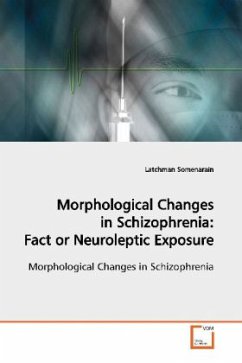Studies on the etiological mechanisms of
schizophrenia have recently focused on the
morphological changes in the prefrontal cortex. This
study was designed to determine if the morphological
changes seen in the fine structures in the
prefrontal cortex in schizophrenia are due to
neuroleptic exposure or the disease. The study
employed MAP2 and Neurogranin Immunohistochemistry,
Nissl staining and Golgi impregnation to analyze the
pyramidal cells and their structures in areas 9 and
17 in a cohort of Huntington s brains and compared
changes to that observed in subjects with
schizophrenia and in controls. The data support the
hypothesis suggesting that antipsychotic medication
might not be responsible for the neuroanatomical
changes observed in the neuropil of the prefrontal
cortex in schizophrenia. Furthermore, these studies
provide additional insightful information for both
schizophrenia and Huntington chorea.
schizophrenia have recently focused on the
morphological changes in the prefrontal cortex. This
study was designed to determine if the morphological
changes seen in the fine structures in the
prefrontal cortex in schizophrenia are due to
neuroleptic exposure or the disease. The study
employed MAP2 and Neurogranin Immunohistochemistry,
Nissl staining and Golgi impregnation to analyze the
pyramidal cells and their structures in areas 9 and
17 in a cohort of Huntington s brains and compared
changes to that observed in subjects with
schizophrenia and in controls. The data support the
hypothesis suggesting that antipsychotic medication
might not be responsible for the neuroanatomical
changes observed in the neuropil of the prefrontal
cortex in schizophrenia. Furthermore, these studies
provide additional insightful information for both
schizophrenia and Huntington chorea.








